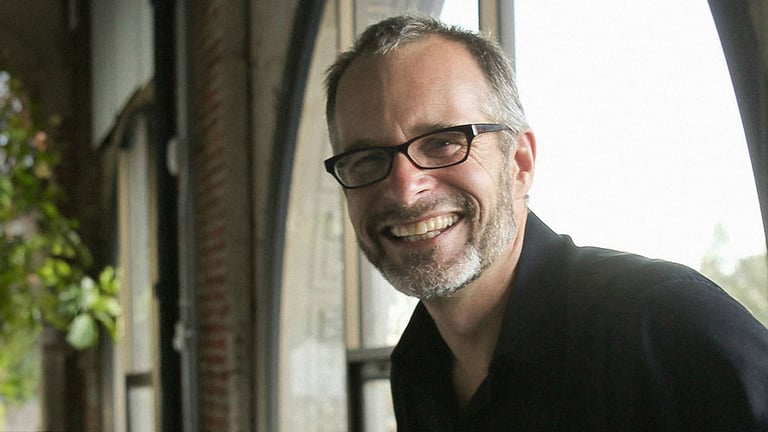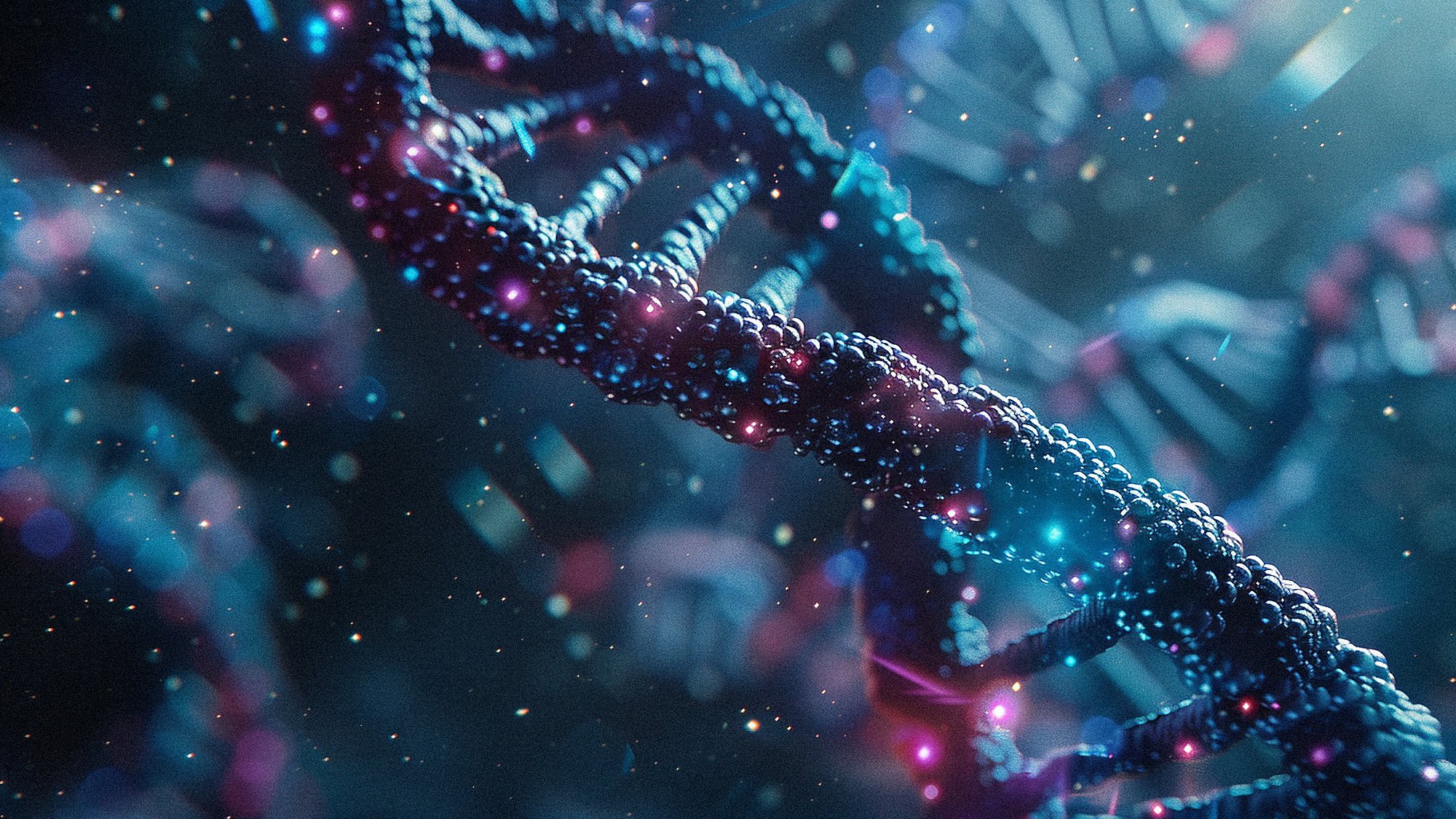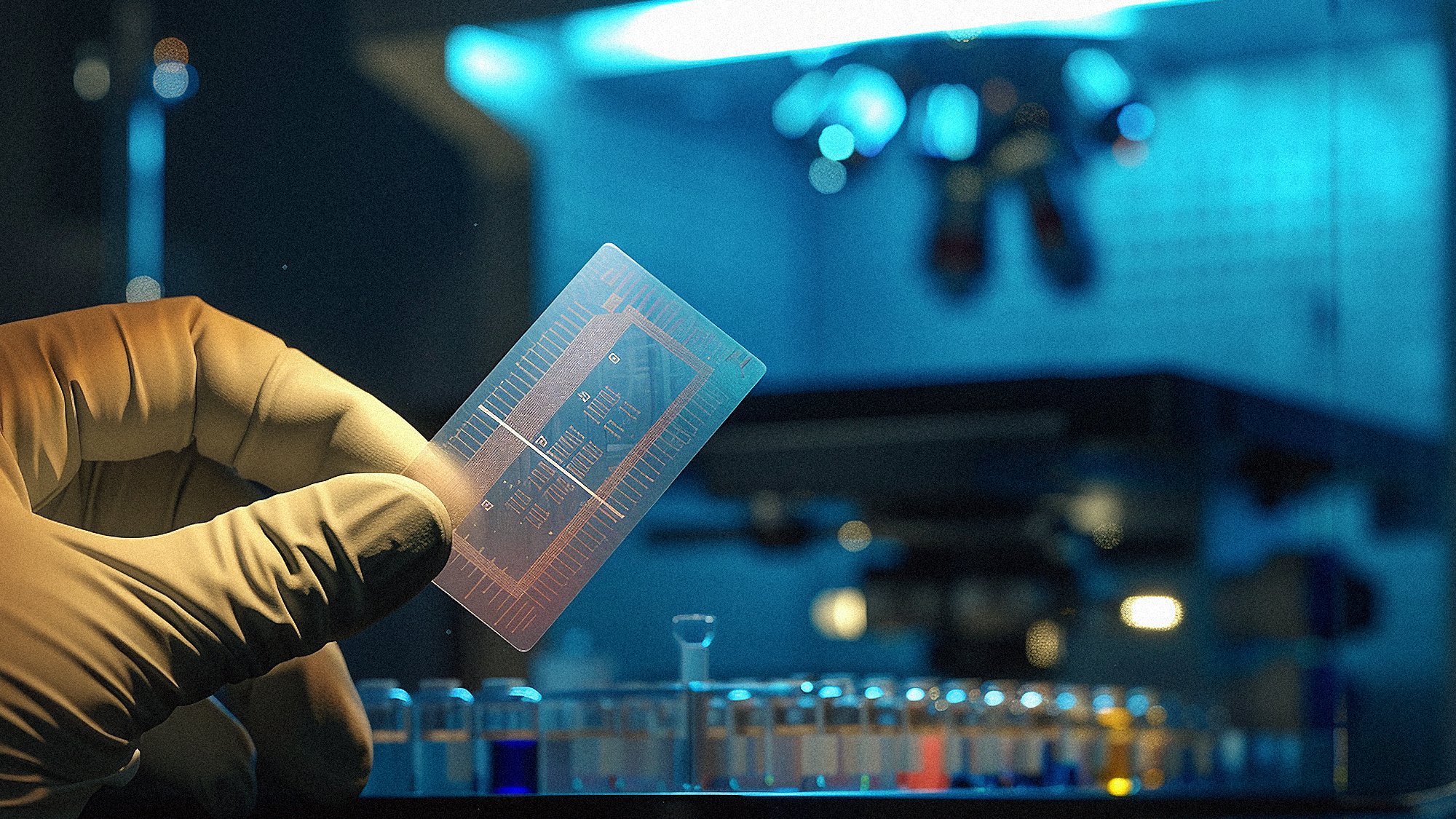The interdisciplinary world of biochips

By Cape Capital
17.04.2024

The intersection of technical engineering with bioengineering holds the promise of real-time analysis of biological data, changing healthcare focus from detection to prediction and prevention.
While Andrew Hessel acknowledges that molecular biochips received a boost (however unwelcome) from the COVID-19 pandemic, he believes the sector's current development is at a similar level to where semiconductor chips were in the 1970s. However, he sees progress beginning to scale up to meet the challenge of combining the engineering of semiconductor chips with biology-based biochips.
"Ultimately, we'll create unique semiconductor-based biochips, which will lead us to bespoke medical health services that monitor and control an individual's health with real-time biological data analysis," he says.
Andrew is well-placed to comment as the President of Humane Genomics, an early-stage company developing synthetic viruses for animal and human health. He’s also the co-founder and chairman of the Center of Excellence for Engineering Biology and the Genome Project-write, the international scientific effort to engineer large genomes, including the human one. He is a former distinguished research scientist at Autodesk Life Sciences.
Creating something new
The biochip is the melding of biochemistry, molecular biology, and genetics. It intersects with semiconductor chip technology, and Andrew sees elegance in the resulting combination: "It's a beautiful thing to see how both fields have evolved. Now, we need to combine them to create something new. That's the hard part."
The world of semiconductors focuses on precise, ultra-clean manufacture. At the same time, biology is humans manipulating liquids by hand on a wet bench with much less sterility and control.
"Learning how a biochip system works involves reverse engineering, taking a cell apart through disassembly, essentially dissecting it down to the atomic level; on the semiconductor side, you're learning how to build it," explains Andrew. "They're different cultures that work in different ways. So the challenge is to bring them together to create a culture that makes the hybrid technology that leads to semiconductor-based biochips."
The first effective biochip system emerged during the investment-rich pandemic. The modular system provided accurate polymerase chain reaction (PCR) diagnostics of virus particles. Despite that initial promise, there is a limited application for this type of biosensing.
"Most will only sense one thing, and the cartridges, chip systems and readers, and software integration are still expensive," Andrew explains. "That said, there are other applications of biochips starting to scale and look promising - but we've got a way to go."

Harnessing molecular capabilities
For more than a decade, Andrew had an initiative supported by the Semiconductor Research Corporation and funded by Mubadala, a major investment company in Abu Dhabi.
The project, SemiSynBio, sought a better understanding of how engineering and biological intersections work. It looked at future opportunities such as diagnostics and new abilities to sequence or synthesise DNA on chips. It also considered how to harness some of biology's molecular computing capabilities and use them practically to power computers.
"The human brain is a supercomputer that runs on around two dozen watts of power, whereas non-biological supercomputers consume tremendous amounts of energy," explains Andrew. "That type of energy usage is not scalable in the long run. So we're going to have to learn new ways of computing that are much more energy efficient if we're going to advance in this field."
On the forward front
Ultimately, biochips will enable customised medical treatments based on unique biological characteristics. Andrew points out that we already have wearable pieces such as the Apple watch, which has an array of sensors that can precisely measure biology and communicate those results to an app or database.
"That's a remarkable, 24/7 system," he says. "There are tremendous advances in monitoring heart conditions, arrhythmias, and blood oxygenation. Sensors that measure sugar levels and can respond by automatically injecting insulin. So, we're already gaining much better diabetic control."
"On the forward front, we're installing neural implants and chips directly into the brain. These remarkable advances mostly come from the semiconductor side as we have very few bio-based systems that can sense things continuously in real time and send information to our electronic systems continuously in real time."
"Most of the advancement right now is in bio-sensing. The neural link is a sophisticated, semiconductor-based system; we've previously tested the system on primates and pigs, but now the first human patients are working with the implanted system and demonstrating their ability to control computer systems just using thought. We're in the early days of something that will continue to emerge, grow and evolve quickly."
Mobile healthcare technology
As technology and computing power enable the development of practical, robust and stable biochips, the possibility of mobile healthcare applications becomes real.
Andrew is an advisor to SynBio Africa, a Uganda-based group of professionals who foresee a healthy, safe, sustainable world through synthetic biology.
"I've been on the ground in Africa," he says. "Digital technologies are everywhere, but they are consumer grade; getting the advanced technologies is harder. For example, some advanced DNA-sequencers are chip-based, non-consumer products that are much more expensive. Also, they may need to be wired correctly for the African power systems, and it can be challenging to get reagents and supplies because they might need a cold chain and delivery. So, trying to do wet bench work or diagnostics is much more complex, even in the big African cities, let alone in rural settings.
However, satellite-based internet enables high-speed connections even in the middle of nowhere, so digital systems are moving faster than our ability to do anything involving biomolecules in the medical or research front.
Owning the data
As with all new and developing technology, there are ethical challenges, especially around genetic information, standardisation and regulatory guidelines. Compared to the fragmented information collection systems of the past, today's data uses artificial intelligence (AI) tools to process and gather all that information in one secure place.
Andrew compares it to creating encrypted bubbles around us, with information ranging from medical scans to texts to family, videos, and photos.
"AI will enable an understanding of you and the diagnostics of you in personal AI lives," he says. "That will be huge because any generated data will become part of your digital twin and guide everything from your health plan to your vacation. We're at the very earliest stage, but people will own and control their data in ways that are hard to imagine today. The torrent of information will be controlled passively in the background with an intelligent agent looking out for you and with whom you can converse, much like talking to someone today."
"For example, if you give medical information to the medical AI to make you a therapy, then that's all negotiated by the system. But what if you also permit a researcher, and that researcher goes on to make a drug using your data? Well, all that gets pre-permission and is negotiated as part of the information transfer. And now, when that drug hits the market, you might get a revenue royalty."
Sounds crazy now, doesn't it? says Andrew, who then refers to the case of Henriette Lacks. In the 1950s, Henrietta Lacks got ovarian cancer and ultimately died from it. But her cells, cultured by physicians, were found to be immortal. They kept growing and dividing; most normal cells don't do that. So Henrietta's cells became a standardised cell line for research and drug development. The estate of Henrietta Lacks went after some of the companies that profited from the sale of her cells, and they've reached substantial settlements.
As Andrew comments: "It's created a precedent, so we'll preempt that in the future by having the right contracts in place."

Closing a circle of evolution
Andrew's goal is to help people better understand and use living systems to meet the needs of humanity. He believes that the medical diagnosis and treatment process begins by designing and building single cells and commends the science team led by Craig Venter for being the first to create such an engineering feat.
"In 2010, Craig and his J. Craig Venter Institute team built the first cellular genome (essentially the code necessary for a cell) and booted it up to make a living cell. He deserves the Nobel Prize because he's the first to create an engineered microbe, which closes a circle of evolution that took 4 billion years."
Andrew also champions the design and production of biochips that will allow that type of engineering, writing genomes fast and cheap, turning cell biology into a programming field, and learning to program living cells.
That development is needed because writing a DNA base pair is about 20 million times more expensive than reading it. However, new technologies are narrowing that gap, and Andrew is championing an incentive prize for innovation through incentives.
"I'm working with the XPrize Foundation, and it's essentially a big cash jackpot to develop next-generation DNA synthesis on a chip," he explains. "Writing the genome of a bacterium should be within reach in the next few years, provided we incentivise the semiconductor community and the biological engineers to come together, drink a few beers, share some ideas and ultimately prototype new DNA synthesisers."
Disease screening, diagnosis, progression and treatment
In future, people may use biochip profiles for disease screening, diagnosis, monitoring disease progression or treatment. Andrew notes that we're learning to build direct connections between biomolecules: "Imagine creating chips pre-loaded with 1000s of antibodies all detecting a specific, different virus. We'd cough on this device, and it would detect a cold, a virus or perhaps something more exotic."
More than 1,000 antibodies for each antigen would be placed in different positions on the chip to ward against false/positive or false/negative results. That process would provide a statistical probability of identifying the right antigen. Future biochips might have millions or billions of junctions, making measurements more robust.
Andrew comments that the electronic side of things is very advanced, and the bio world will catch up.
"Everything biological reduces to DNA code," he says. "The cell is a universal factory. Human versus bacterium is the same standardised code. So, if you change the code, you change the organism. We already have rapidly evolving software for designing and building DNA code or biological functions. We can make more advanced biology and have an incredible number of templates to learn from because we've sequenced millions of organisms. It's the training set for AI-designed tools for the next generation of biomolecular cells.
"We already have computer systems that can design proteins from scratch, including proteins that nature has never imagined, such as enzymes that can degrade plastic. We can program biology to do that. As tools and scientists get more sophisticated, so does our ability to turn designs into exponential biology advances. In the coming decades, we'll see a new field of semiconductor biochips."
Andrew advocates for personalised medicine because it's created for the individual. No one else will have that same treatment, and a person can be the final arbiter of whether or not to take that medicine.
"I champion bespoke custom cancer medicines because no two cancers are the same," he adds. "It's your cells that have gone rogue and are misbehaving and being cancerous. And no one else has your cancer."
Already, several processes, from biopsy to therapeutic, can be almost entirely automated. Andrew believes cancer will be solved, much as antimicrobials were solved in the last century.
"We used to die from a bad infection – a microbe will kill you far faster than cancer – but then we developed antibiotics, and now you don't even get a day off work," he adds.
Your life, your control
"Technologies become cheaper as we democratise and get them into the hands of everybody. In the future, we'll have the same thing for biosensing, biomanufacturing, bioengineering, and bio-design. The one thing we all have is life. It's important to us, and we're surrounded by life; life is inside all of us. We're moving away from the paternalistic ideas of research and medicine to more democratised versions where we say, look, it's my life, and I should have control over it.
"We're seeing rapid technological innovation that will include more biology and molecular systems as we move forward. Our kids will benefit, and our grandkids will benefit. And that future is coming fast – faster than we think."
Andrew Hessel is a pioneer in synthetic biology, a futurist, microbiologist and geneticist, and inventor and entrepreneur. He is a proponent of open source biology and advocates that cells are living computers and DNA is a programming language